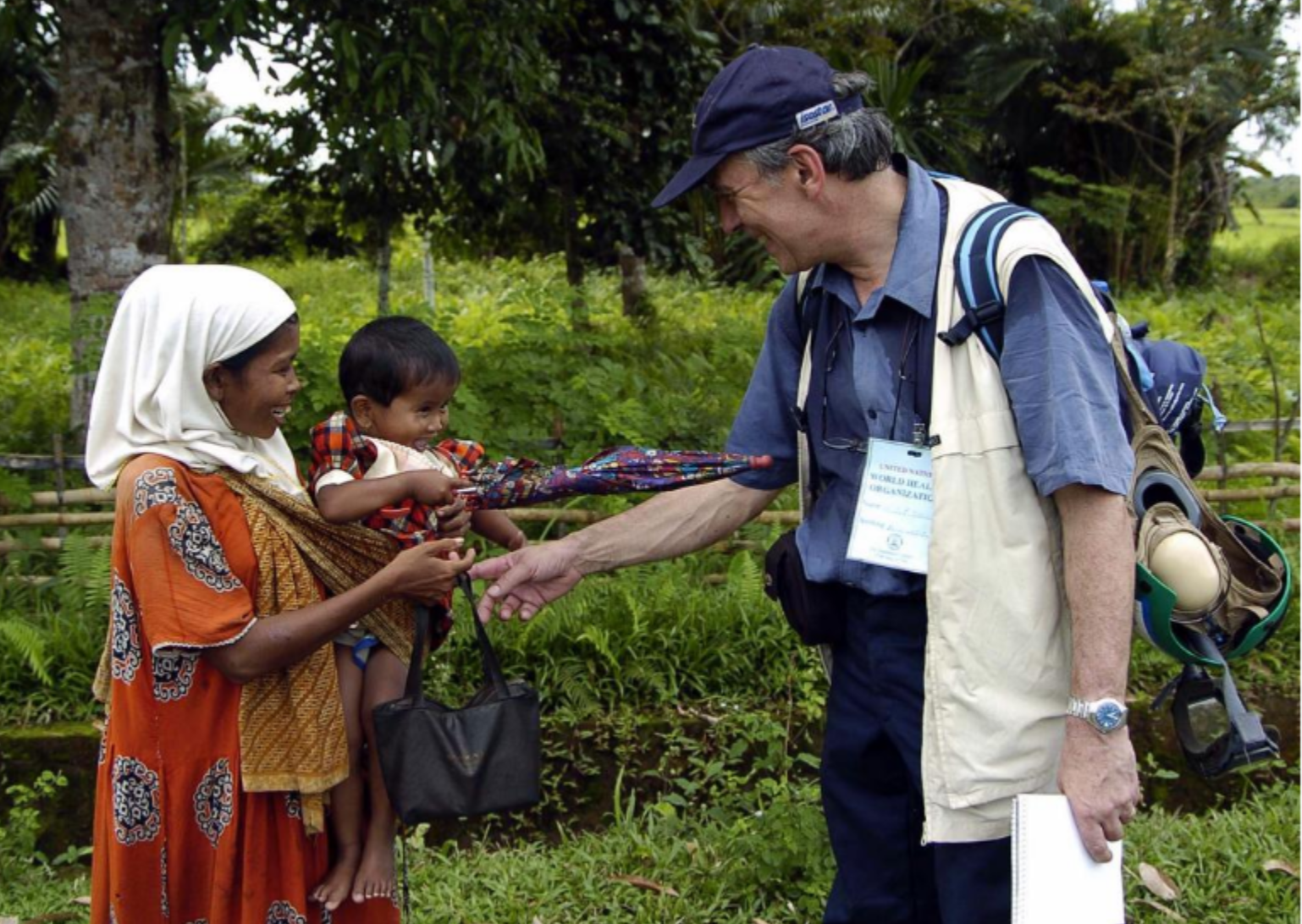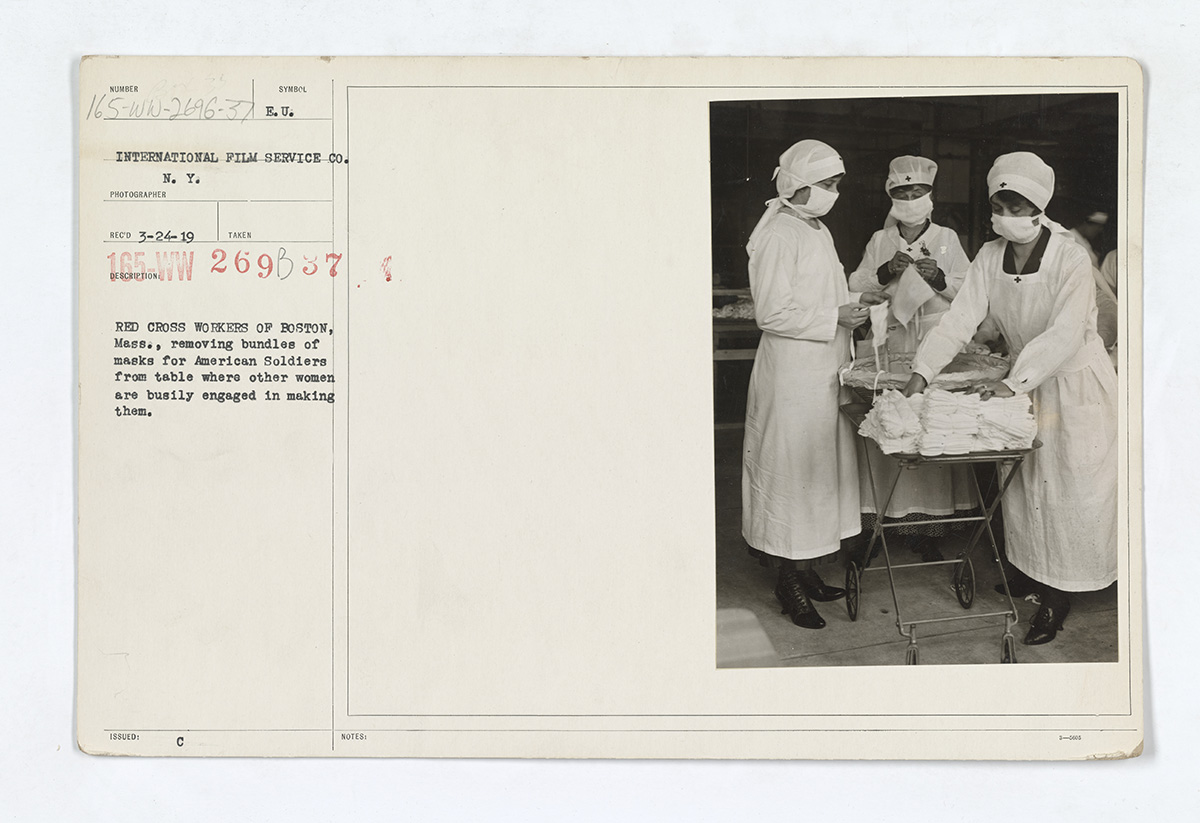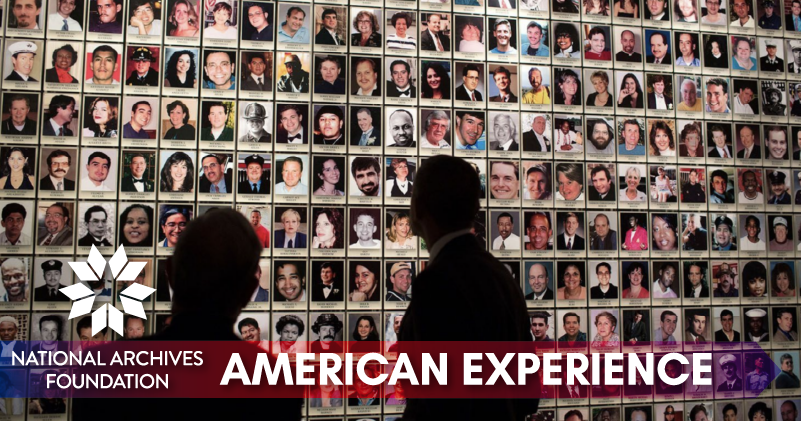Salute to Our Heathcare Workers

It is impossible to reflect on the last 12 months and not think of the profound impact that nurses and the health-care community as a whole have had on our lives. What a challenging, heart-breaking and exhausting year for them – and us! Fortunately, as this email message hits your inbox, nearly 50% of the U.S. adult population has had one dose of vaccination for COVID-19. May 6 through 12 is National Nurses Week, and we are honored to mark that observance. We also want to recognize all medical workers who have sacrificed so much to keep the rest of us safe and healthy throughout the pandemic, as well as the health-care volunteers who are working in tandem with the medical community in both public and private sectors to ultimately get our nation through the pandemic. Where would we be without all of them working together?
We have learned a great deal about past outbreaks, flus, vaccination efforts and public health awareness campaigns. The Archives is no stranger to difficult periods of history our ancestors overcame. So this week we add our appreciation to those who staff the nursing homes, hospitals, ERs and urgent care centers. We hope our contagious passion for history and the Archives (which is proven to be 100% safe!) rubs off on you.

Patrick Madden
Executive Director
National Archives Foundation
WHO Helps Promote World Health?

For more than 150 years, national and international organizations have made it their mission to promote good health on a global scale. The International Committee of the Red Cross (ICRC) has its roots in the experiences of Swiss businessman Henry Dunant, who witnessed the terrible suffering of soldiers after the Battle of Solferino between the Franco-Sardinian Alliance and the Austrian Army in 1859. Horrified by what he saw, Dunant mobilized a massive volunteer effort to care for the wounded regardless of which side they had fought on. He went on to establish the ICRC with co-founder Gustave Moynier in 1863. Their efforts resulted in the signing of the First Geneva Convention by 12 nations in August 1864. The International Red Cross is affiliated with national Red Cross and Red Crescent societies worldwide.
In the United States, the Centers for Disease Control and Prevention (CDC) began as the Communicable Disease Center in a small office in Atlanta in 1946. Its mission was to prevent the spread of malaria. Since then, the CDC has become an important division of the Department of Health and Human Services. The organization is dedicated to health promotion, prevention and preparedness. It has played an active role in managing outbreaks of disease across the country.
The World Health Organization is an arm of the United Nations that was established in 1948. Creating a world health organization was a primary priority among the countries that joined to create the United Nations after World War II. The WHO’s goals are to promote health, keep the world safe and serve the vulnerable. The WHO works worldwide with national health organizations like the CDC in the U.S. to achieve these goals.
Nongovernmental organizations (NGOs) also work to promote world health. Médecins Sans Frontières (MSF), which translates in English as “Doctors Without Borders,” is an international NGO dedicated to caring for people in conflict regions and in countries troubled by endemic diseases. It was established in 1971 in response to the humanitarian crisis caused by the Nigerian-Biafran War of 1967-1970. MSF limits the amount of money it accepts from governments to maintain its independence and its ability to speak out on international health issues.
(Un)Masking the 1918 Flu Pandemic

Until COVID-19 began to spread worldwide, the 1918 flu pandemic had largely faded from public memory and was rarely discussed in U.S. schools. The strain of flu that swept the globe in 1918 killed an estimated 50 million people, which is more than twice the number who died during World War I. It infected people both in big cities and in remote regions, and some 675,000 people died in the U.S. alone. The spread of the virus was aided and abetted by World War I, which brought millions of people from all over the world into contact. The flu mainly killed healthy young people, a development that was markedly different from previous flu strains—and, indeed, from the behavior of COVID-19.
Service and Sacrifice

Army Nurse Corps
National Archives Identifier: 535942
Nurses have served the United States in time of war since the Revolutionary War. They have worked in buildings pressed into service as hospitals, and in mobile hospitals located practically on the frontlines. They have been Red Cross volunteers and held commissions in the United States military. They have been injured on the job, shot at and even killed outright while they worked to help the wounded.

Forty-Fifth Medical
Company Meritorious
Unit Commendation:
Sharon A. Lane
National Archives Identifier: 305391
Tragically, Lt. Sharon A. Lane was the first woman killed in the Vietnam War on November 11, 1969 while serving as a nurse. The National Archives has the paperwork recommending her for posthumous medals to honor her service and sacrifice.
Source: U.S. Army Center of Military History
The National Archives is the repository for U.S. military records, including those of military nurses. In addition, the U.S. Army Center of Military History has compiled a very detailed timeline of the service of nurses in all U.S. conflicts.
Honor YOUR Healthcare Hero!

National Archives Identifier: 12167602
COVID-19 has been described as a once in a century pandemic, and 100 years from now, students of history will be looking at our photos of masks and vaccination cards to learn about this dark and difficult chapter. But this year has also shown our strength and resiliency, and the Archives Foundation wants to mark this moment as well.
To honor the health-care heroes who have been literal lifelines throughout this pandemic, the Foundation will feature them as a part of history on both our social media platforms and newsletter. There are two ways to spotlight your favorite health-care hero (doctors, nurses, researchers, dentists/hygienists, EMTs, etc. All are welcome!):
- Email us their picture to [email protected] and/or
- Post them to your social media platform of choice and tag us:
- –Facebook: @National Archives Foundation
- –Twitter: @archivesfdn
- –Instagram: @archivesfdn
We’ll feature your health-care heroes on our social media and a few will even be featured in a future newsletter! To kick it off, above is our favorite health-care hero, Mrs. Annie Laurie Ewald, the Archives Nurse in 1951.
People over Patents

Jonas Salk and the Polio Vaccine online research documents
at the Eisenhower Library
In 1955, Dr. Jonas Salk announced that he and his team of researchers had developed a vaccine against polio, which had killed thousands of Americans and crippled tens of thousands more. Salk took the extraordinary step of not patenting his vaccine, which effectively made it available worldwide. Had he patented the vaccine, he could have pocketed enormous personal profits, but instead he chose to benefit humanity at large rather than himself.
First Ladies, First Responders

Eleanor Roosevelt was not afraid to get her hands dirty in service to her county. She was active in the American Red Cross for most of her life. During World War I, she worked at a Red Cross canteen in Washington, D.C.’s Union Station, and when World War II started, she became the national honorary vice chair of the organization.
In August and September of 1943, Roosevelt undertook an ambitious tour of the war zone in the South Pacific as an official representative of the American Red Cross. Throughout the tour, she wore her Red Cross uniforms.
Pat Nixon, wife of President Richard M. Nixon, was also a devoted supporter of the Red Cross and volunteered for the organization for many years. She started as a secretary in 1940 and continued to donate her time to the Red Cross thereafter.





